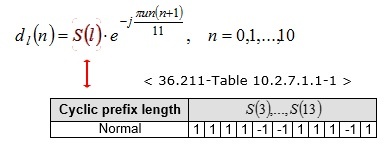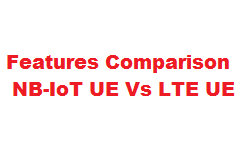NB-IOT Synchronization Signals (NPSS and NSSS)
The NPSS and NSSS helps UE to synchronize downlink to an NB-IoT cell. These are transmitted in certain subframes based on an 80-ms repetition interval. By synchronizing to NPSS and NSSS, the device will be able to detect the cell identity number (NB-IOT PCI).
NPSS and NSSS are designed to allow devices to use a unified synchronization algorithm during initial acquisition without knowing the NB-IoT deployment mode (In-band, Guard-band or stand-alone). This is achieved by avoiding collision with REs used by LTE as much as possible.
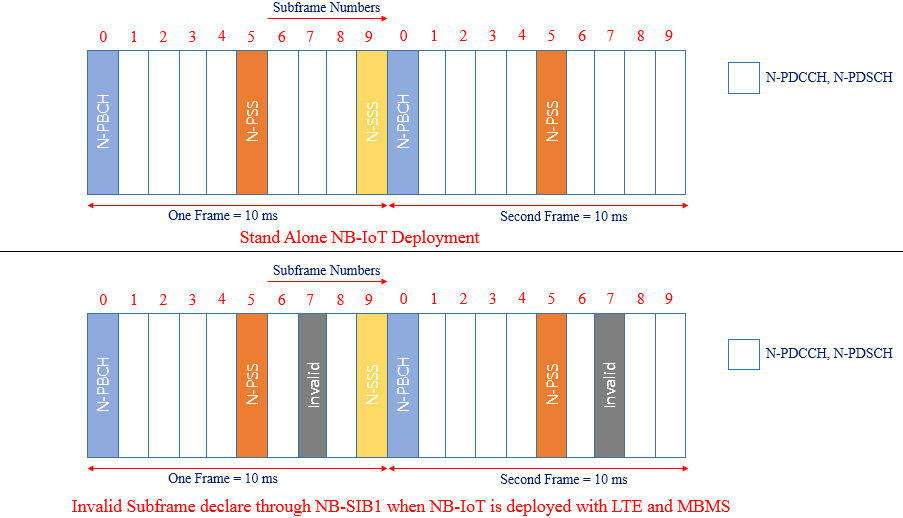
For example, numbering subframes within a frame from 0 to 9, LTE may use any of subframes 1, 2, 3, 6, 7, or 8 as an MBSFN subframe. However, during initial cell acquisition the device does not know the deployment mode and whether any of these subframes is used as an MBSFN subframe. Collision avoidance with any possible LTE MBSFN
subframe is achieved by using subframe 5 for NPSS and subframe 9 for NSSS.
Furthermore, LTE may use up to the first three OFDM symbols in every subframe for PDCCH. To avoid potential collision with LTE PDCCH, the first three OFDM symbols are not used in the subframes that carry either NPSS or NSSS. This leaves only 11 OFDM symbols per subframe available for NPSS and NSSS. These symbols are generated from frequency-domain Zadoff-Chu (ZC) sequences, and finally modulated into OFDM waveforms.
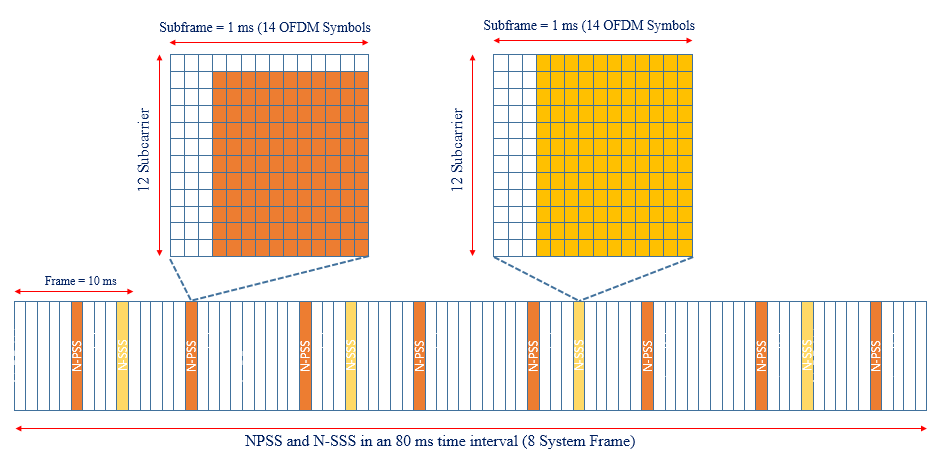
NPSS(Narrowband Primary Synchronization Signal)
The NPSS is used by the devices to achieve synchronization, in both time and frequency, to an NB-IoT cell. The NPSS is needs to be designed so that it is detectable even with a very large frequency offset. Because of the consideration of device complexity required for NPSS detection, all the cells in an NB-IoT network uses the same NPSS. As a result, a device only needs to search for one NPSS. In contrast, an LTE network uses three PSSs.
- Subframe Number : 5
- Subframe periodicity: 10 ms
- Sequence pattern periodicity: 10 ms
Sequence Generation : Following is equation to generate NPSS sequences. here u =5 and l varies from 3 to 13.
The sequence dl(n) will be mapped to resource elements (k,l)in increasing order of k and then l.
- k = 0,1,2,..10 , sub carrier Index
- l = 3,4,4,..13 , OFDM symbols
Below figure is to better understand the location of NPSS in time and frequency domain. Here Cell specific reference signals are not highlighted, as spec if any cell specific reference signal falls in NPSS region then it will be transmitted and corresponding NPSS sequence is not transmitted .
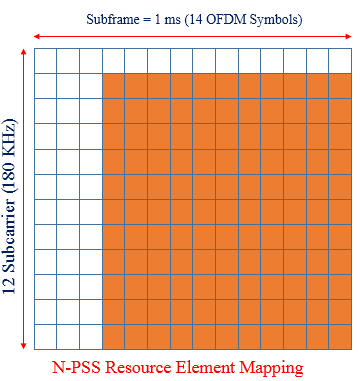
NSSS(Narrowband Secondary Synchronization Signal)
After the UE has performed synchronization in time and frequency acquiring the NPSS, it turns to NSSS to detect the cell identity and acquire more information about the frame structure. NB-IoT supports 504 unique physical cell identities (PCIDs) indicated by NSSS. NSSS has an 80-ms repetition interval, within which four NSSS sequences are transmitted.
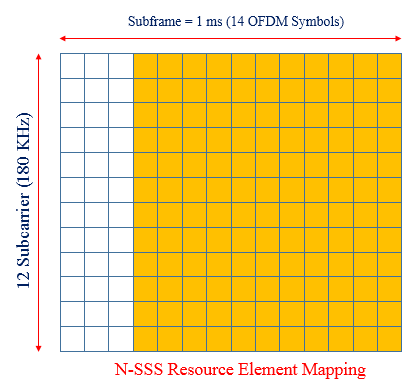
The four NSSS sequences transmitted in an 80-ms repetition interval are all different; however, the same set of four sequences are repeated in every 80-ms repetition interval. As explained earlier, only the last 11 OFDM symbols in an NSSS subframe are used to carry NSSS. However, compared with NPSS, NSSS is mapped to all 12 subcarriers of the PRB resulting in 132 REs in an NSSS subframe for NSSS.
- Subframe Number: 9
- Subframe periodicity: 20 ms
- Sequence pattern periodicity: 80 ms
Length of NSSS is 132 sequence long and this is derived using below formula. n varies from 0 to 131 and hence we will have sequence from d(0),d(1),..d(131).
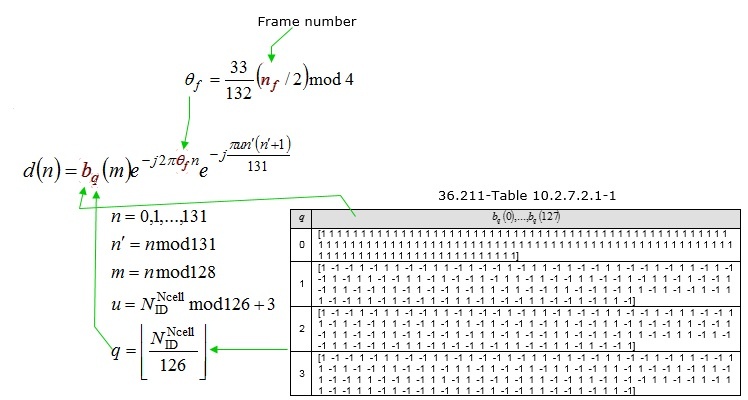
Following are major differences between LTE Sync Signals and NB-LTE Sync Signals,
- In LTE ,PSS use to be Zad-off Chu signal of length 62 symbols and it use to occupy 6 RB (72 sub carriers) in one OFDM symbol where in NB-IOT Zad-off Chu signal is carried out in 11 OFDM symbols of a Resource Block.
- In NB-IOT , NPSS is transmitted in every 5th sub frame of a radio frame while in LTE it is transmitted in last OFDM symbol of every sub frame 1 and 6.
- In NB-IOT NSS periodicity is 20 ms while in LTE SSS periodicity is 5 ms
- In LTE SSS is mapped to 72 active sub carriers(6 resource blocks), centered around the DC subcarrier in Subframe 0 and Subframe 5 in FDD while NSSS is transmitted in subframe 9 in alternative radio frames.
Related Post
- Narrow Band IoT
- Narrow Band IoT Frequency Bands
- Narrow Band IoT Frame Structure
- Narrow Band-Physical Broadcast Channel (NPBCH)
- NB-IoT PRBs (Physcial Resource Blocks) for In-Band Operation
- Narrow Band IoT- Signalling Radio Bearers (SRBs)
- Narrow Band-IOT UE Attach Call Flow Messaging
- Cat. NB1 and Cat. NB2 Devices Comparison

